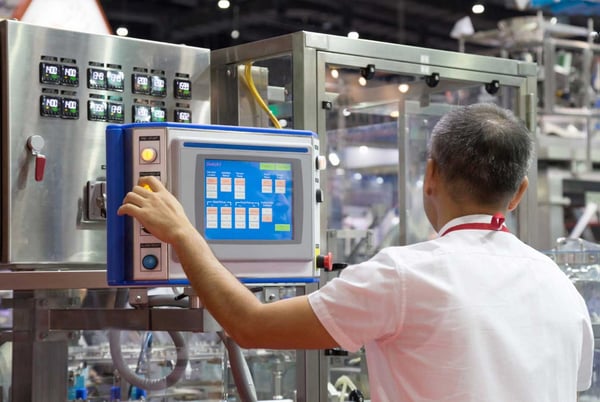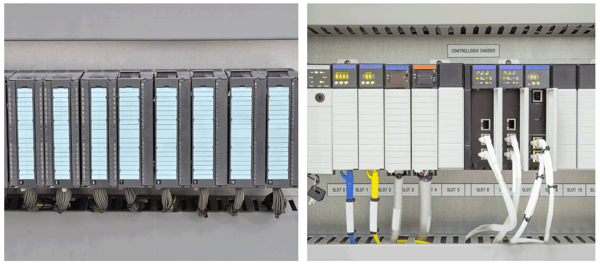Has maintaining your outdated control system become increasingly difficult, time consuming, and costly? It may be time for an upgrade. Control system upgrades come with some inherent risks of disruption and downtime, but there are steps you can take to mitigate as much risk as possible during the upgrade. Let’s briefly examine five common risk mitigation strategies our engineers at Vertech employ to help ensure a smooth migration.
Risk Mitigation Strategy #1: Develop a Solid Understanding of System Operations
Before starting a control system upgrade, it is best to have an in-depth understanding of how your control system functions. While this may sound obvious, what we’re talking about here is a thorough understanding of the nuts-and-bolts of the system. For example, do you know exactly which PLCs control which motors? Or do you know which objects on the SCADA are associated with which PLCs? If a complete software upgrade is also occurring, in addition to understanding the system’s architecture, it is also important to understand any potential operational issues and any changes in the software functionality since inception.

Risk Mitigation Strategy #2: Determine Acceptable Downtime
In a migration, any downtime is a direct loss of revenue. Therefore, comprehensive planning and coordination is necessary to minimize losses. To determine how much downtime can be tolerated during an upgrade, production and upper management need to work closely to produce an honest assessment of the risks of downtime in various parts of the system. None is a fair answer for some systems when considered in their entirety, but if the system is broken down into its constituent parts, it’s almost always the case that individual pieces can withstand some amount of downtime. An additional way to mitigate downtime is to think about how much of the migration can occur in parallel of the existing operational system.
Risk Mitigation Strategy #3: Perform Proof-of-Concept Testing
When possible, it’s best to test an idea in a low-risk scenario rather than just deploying it straight to your plant floor. One approach to this is to use a low-risk system as a proof-of-concept for testing the migration strategy. A low-risk system can be one that stands alone but is part of a redundant system and uses hardware that is similar to or the same as the primary system targeted for migration. If there are not physical systems available for proof-of-concept testing, you must create your own test environment. This can be achieved by leveraging virtualization technology, emulation technology or even pulling spare parts from the stock room and creating a miniature version of the system in question.
Risk Mitigation Strategy #4: Select Established, Scalable, and Secure Hardware and Software
Another important factor in any control system upgrade is to ensure you are developing systems that are built to last so that you don’t find yourself in this same situation in three to five years. One best practice is to avoid using first-generation hardware or software that isn’t fully vetted. And, since we live in a cyber-insecure world, it is also important to think about system security when selecting hardware and software. While new technology is inherently more secure than older technology, you will want to make sure there aren’t any vulnerable points, especially in your software.
 Knowing all the details about your system up front will help mitigate risks such as unnecessary downtime and possibly even help save money by not upgrading components that really don’t need it.
Knowing all the details about your system up front will help mitigate risks such as unnecessary downtime and possibly even help save money by not upgrading components that really don’t need it.
Risk Mitigation Strategy #5: Outline a Complete Plan for Control System Conversion
Finally, planning cannot be over-emphasized in any migration strategy. But, since your employees need to primarily focus on keeping the day-to-day operations of the factory flowing, performing a control system upgrade is not easy to do alone. Selecting an integrator with a successful track record of navigating companies through control system upgrades can further mitigate any potential risks and help ensure nothing is missed.
Vertech can act as an objective partner that can help you avoid critical design mistakes and further alleviate potential risks. We understand that with proper risk assessment, stakeholder communication, production planning, and testing a seemingly impossible migration path can easily become a reality. And, even though each organization’s control systems are unique, we also know proper planning will ensure a solution is developed that meets your company’s individual technical, time, and budget specifications.
Download the full white paper to learn more about these risk mitigation techniques, as well as planning approaches to make your upgrade more manageable.



COMMENTS